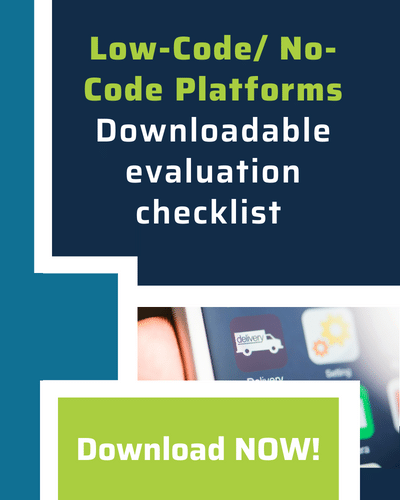In the ever-evolving world of enterprise resource planning (ERP) systems, SAP S/4HANA is a game-changer. Its advanced capabilities promise to modernize and streamline business operations. However, embarking on an S/4HANA migration is no small feat. It requires careful planning, decision-making, and a deep understanding of the nuances involved. In this blog, we delve into eight critical findings about S/4HANA migrations that every organization should consider.
- 1. Greenfield or Brownfield Approach for the S/4HANA Conversion?
The first big decision in an S/4HANA migration is whether to go greenfield or brownfield. Greenfield involves building a new system from scratch, while Brownfield involves upgrading your existing SAP ECC system.
Pillir specializes in modernizing legacy systems without disrupting existing workflows. For organizations leaning towards the brownfield approach, Pillir's solutions can help optimize and transform custom code to align with S/4HANA's standards while preserving critical business logic. This ensures a smoother transition and minimizes the risk of business interruptions.
- 2. Technical Upgrade or Functional Conversion?
Once you've decided on the approach, the next question is whether to focus on a technical upgrade or a functional conversion. Technical upgrades minimize changes to existing processes, while functional conversions allow for process optimization. Consider your organization's business goals and the opportunity for process improvement when making this choice.
Pillir's platform facilitates both technical upgrades and functional conversions. With its no-code/low-code capabilities, organizations can quickly adapt and optimize processes during migration. This empowers organizations to take full advantage of the functional conversion option without extensive development efforts.
- 3. Material Number Extension; is it that bad?
The transition to S/4HANA often involves material number extensions due to changes in data models. While this can be a concern, it's manageable with proper data cleansing and migration strategies. Addressing material number extensions early in the migration process is crucial to avoid complications down the road.
Pillir's data migration tools and expertise enable organizations to efficiently handle material number extensions. Its data cleansing and transformation capabilities ensure data consistency and integrity, making material number extensions less daunting and more manageable.
- 4. Do I really need to touch all my custom code during the S/4HANA conversion?
Custom code is a common feature of SAP ECC systems. During migration, custom code must be assessed and potentially reworked to align with S/4HANA's standard functionalities. However, not all custom code requires modification. Careful analysis is necessary to determine which customizations are essential and which can be retired.
Pillir's automated code analysis and modernization tools can assess custom code and identify which parts need modification. This approach reduces the manual effort required to review and rework customizations, saving time and resources.
- 5. Which SAP Notes really matter for my S/4HANA Conversion?
SAP provides a wealth of documentation and notes to aid in S/4HANA migrations. Identifying the most relevant SAP Notes for your specific migration project is essential. These notes contain crucial information about prerequisites, compatibility, and known issues. Keeping abreast of SAP Notes can save you from unnecessary hurdles.
Pillir maintains an up-to-date knowledge base that includes relevant SAP Notes and best practices. Organizations can leverage this resource to ensure they are following SAP's recommendations and addressing known issues effectively during their migration.
- 6. HANA Database changes (the known issue)
Migrating to S/4HANA often involves transitioning to the HANA database. This can lead to some challenges, including changes in database structures and performance optimization. Understanding these database changes and planning for them is vital for a smooth migration.
Pillir's expertise in SAP HANA and database optimization can assist organizations in preparing for HANA database changes. With a focus on performance tuning and optimization, Pillir ensures that the migration to the HANA database is seamless and results in improved system performance.
- 7. Everything is faster on SAP HANA?
While SAP HANA is renowned for its speed, simply migrating to it doesn't guarantee instant performance improvements. To fully leverage HANA's capabilities, businesses may need to optimize their applications and processes. Performance testing and fine-tuning are critical steps post-migration.
- 8. SELECT SINGLE on HANA DB (the bomb is ticking…)
One common pitfall is the use of "SELECT SINGLE" statements in custom ABAP code. These statements might work on traditional databases but can cause performance issues on HANA. Identifying and replacing such statements with optimized code is essential for efficient HANA operations.
Pillir's code analysis tools can identify problematic "SELECT SINGLE" statements in custom ABAP code. With this insight, organizations can proactively replace or optimize such statements to prevent performance issues on the HANA database.
In conclusion, S/4HANA migrations hold great promise but require careful planning and decision-making. Greenfield or Brownfield? Technical upgrade or functional conversion? These are just a few of the questions to consider. The key is to approach the migration strategically, leverage SAP's extensive resources, and seek assistance from experienced partners like Pillir. With Pillir's expertise and technology solutions, your organization can navigate the journey to S/4HANA successfully, unlocking its full potential for the future.




 Back
Back/Logo%20-%20black%20text%20blue%20pillar%20(large)-1.jpg)

